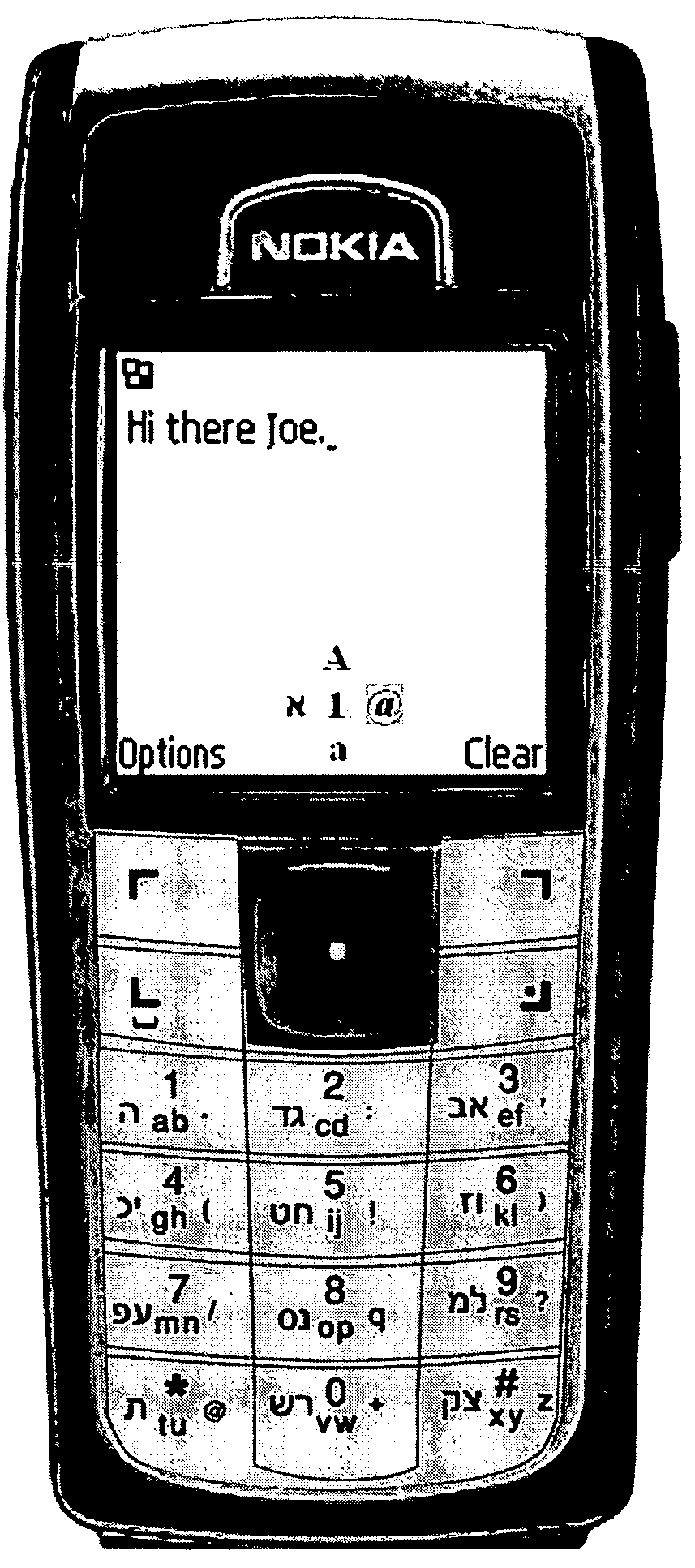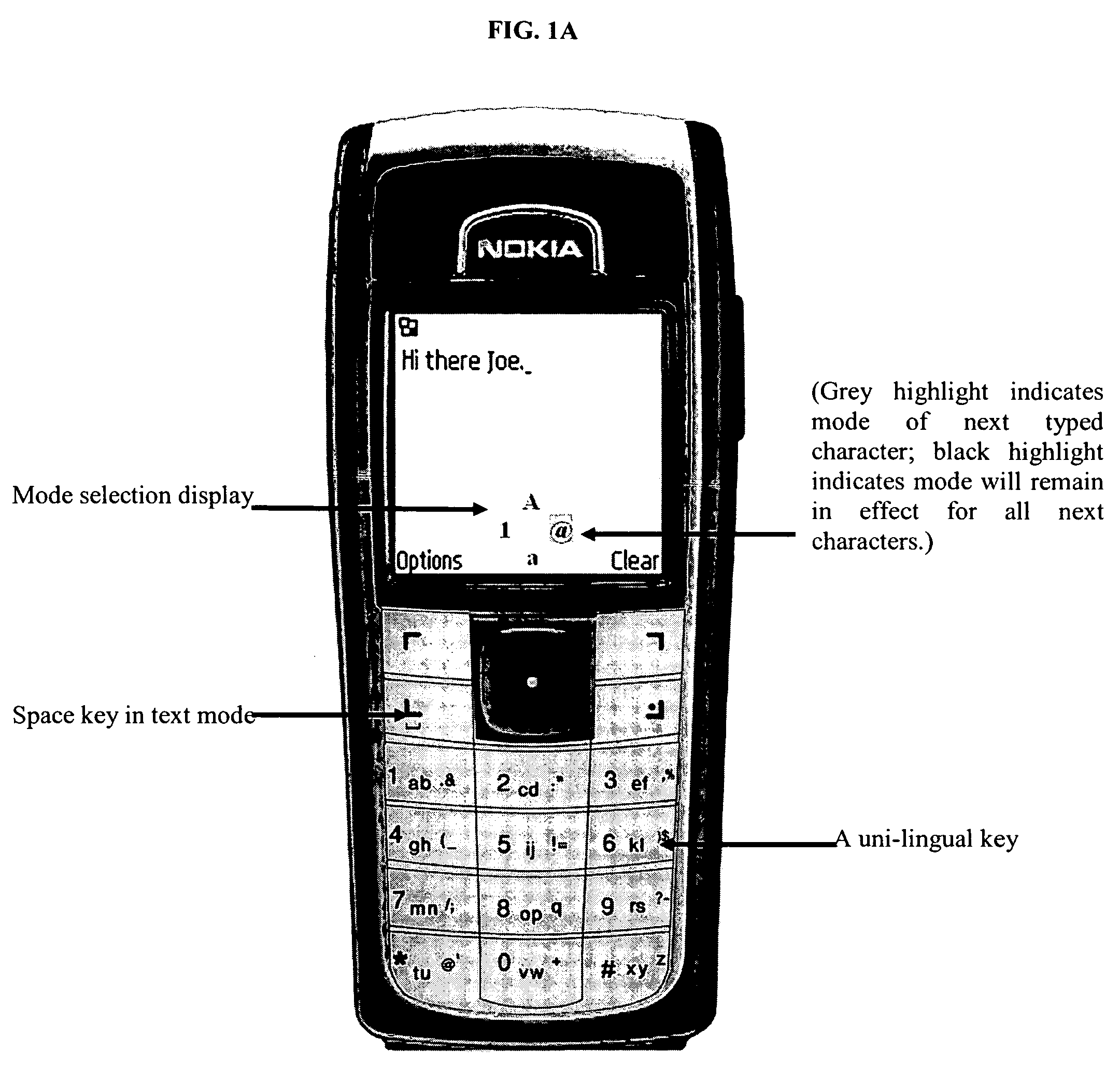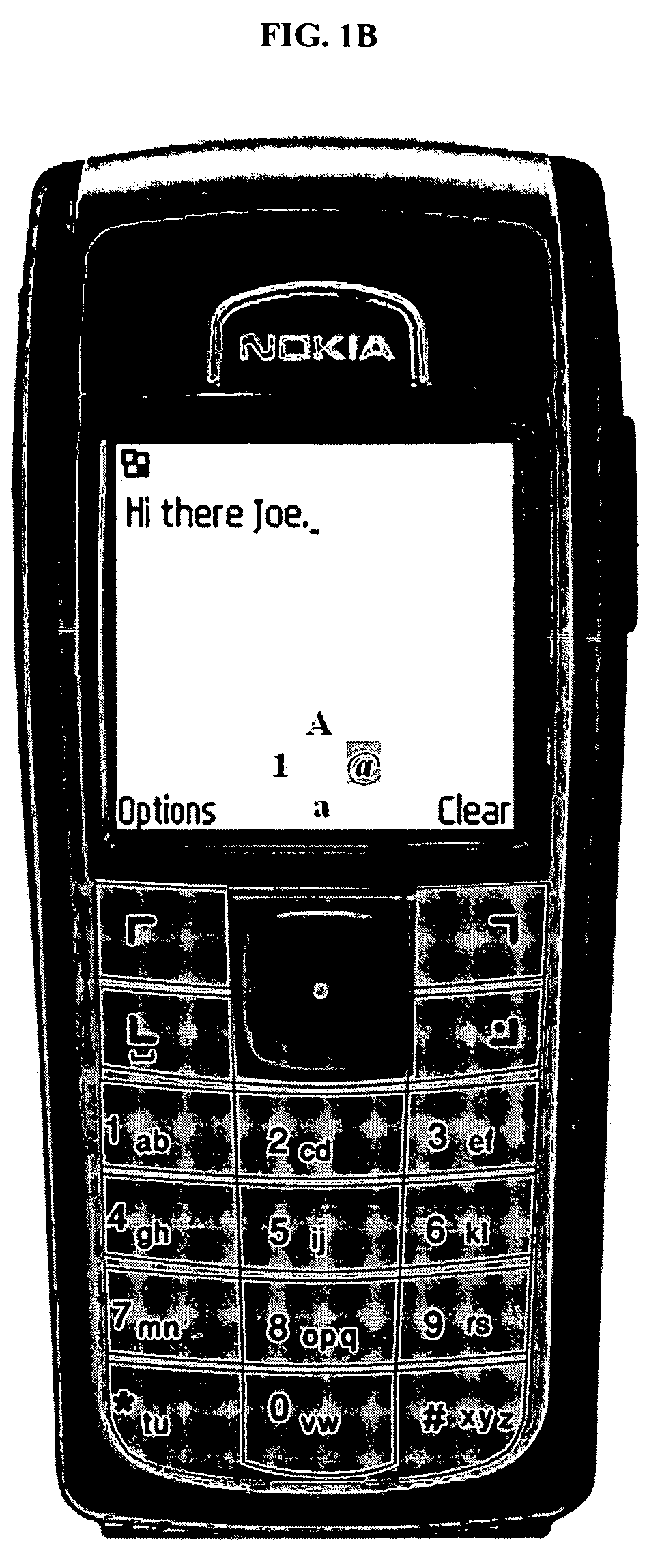Method for assigning large sets of characters in different modes to keys of a number keypad for low keypress-data-entry ratio
a technology of keypad and data entry, applied in the field of large sets of characters in different modes to keys of the number keypad for low keypressdata entry ratio, can solve the problems of increasing tooling and assembly costs, affecting the operation of small individual keys, and affecting the accuracy of data entry, so as to increase the number of characters, increase the amount of time required, and expand the available characters
- Summary
- Abstract
- Description
- Claims
- Application Information
AI Technical Summary
Benefits of technology
Problems solved by technology
Method used
Image
Examples
Embodiment Construction
[0026]Referring to FIG. 1A, an embodiment of the invention is shown assigning 24 of the more frequently used letters of the 26-letter English alphabet to the 12 keys of a standard numeric keypad in a first non-numeric character mode (referred to herein as “Letter” mode), and other characters, including symbols, functions, punctuations and / or the less frequently used letters of the alphabet, to one or more other, optional character modes (the one here referred to as “Sign” mode). Each key of the 12-key numeric keypad is associated (imprinted) with two letters of the English alphabet for the first (Letter) character mode and one or more signs for a second (Sign) character mode. In the first character mode, 24 letters are assigned in pairs in alphabetic order except for two infrequently used letters, such as the ‘Q’ and ‘Z’ letters. The second character mode (imprinted on the right part of each key) has one or two signs on each key and, on two, the infrequently used ‘Q’ and ‘Z’ letters...
PUM
 Login to View More
Login to View More Abstract
Description
Claims
Application Information
 Login to View More
Login to View More - R&D
- Intellectual Property
- Life Sciences
- Materials
- Tech Scout
- Unparalleled Data Quality
- Higher Quality Content
- 60% Fewer Hallucinations
Browse by: Latest US Patents, China's latest patents, Technical Efficacy Thesaurus, Application Domain, Technology Topic, Popular Technical Reports.
© 2025 PatSnap. All rights reserved.Legal|Privacy policy|Modern Slavery Act Transparency Statement|Sitemap|About US| Contact US: help@patsnap.com



